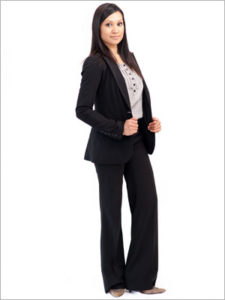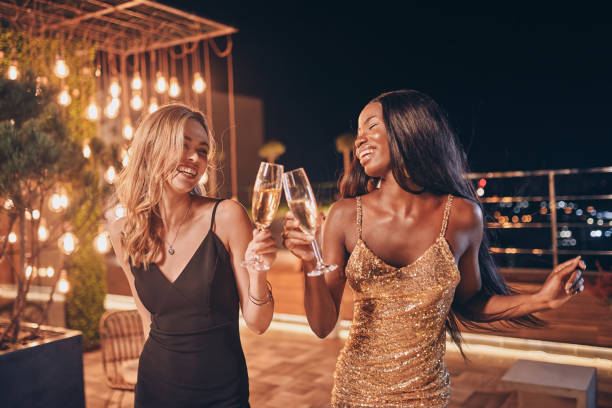The term “fashion” refers to a wide range of aesthetics, styles, and trends in clothes, footwear, accessories, and personal hygiene. It is a dynamic sector that is always changing and reflects the social, cultural, and economic forces of the moment.

Designers, fashion houses, celebrities, and influencers who develop and present new looks through runway shows, fashion weeks, and social media platforms frequently determine fashion trends. These trends may include certain color schemes and patterns as well as silhouettes, materials, and overarching design components.
Fashion also includes non-clothing items like jewelry, purses, belts, hats, and shoes that are worn to complete and improve a person’s entire appearance. Additionally, fashion is heavily influenced by beauty and grooming, with changes in skincare, cosmetics, and haircuts having a huge impact on the entire aesthetic.
In the fashion sector, ethical and sustainable practices have gained importance. To lessen the environmental effect of the fashion industry, many firms and designers are putting an emphasis on eco-friendly and ethical methods, such as the use of organic materials, fair trading, recycling, and waste reduction.
Fashion is not just limited to high-end designer brands; it exists at various price points and can be accessible to people with different budgets. Fast fashion has gained popularity in recent years, offering affordable, quickly produced clothing that follows the latest trends. However, it is important to consider the social and environmental consequences associated with fast fashion and support brands that prioritize sustainability and fair labor practices.
Overall, fashion is a creative and ever-evolving industry that allows individuals to express their personal style and identity, while also reflecting the cultural and societal influences of the time.
Fashion can be categorized into various types based on different factors such as style, occasion, purpose, and cultural influences. Here are some common types of fashion:
- Casual Fashion: Casual fashion refers to everyday wear that is comfortable and relaxed. It includes items like jeans, t-shirts, sneakers, shorts, and simple dresses. Casual fashion is often associated with a laid-back and informal style.
- Formal attire: Formal attire is usually reserved for exceptional occasions and events that demand for a more refined and elegant appearance. It comprises attire such as formal dresses, tuxedos, suits, evening gowns, and dress shoes. Formal attire frequently follows established dress rules, such as those for black-tie or white-tie occasions.

- Urban culture is the source of streetwear fashion, which is distinguished by its edgy and informal look. Graphic t-shirts, hoodies, sneakers, baggy pants, baseball hats, and statement accessories are frequent components. Youth and street culture have a significant effect on streetwear fashion.
- High Fashion: Also referred to as haute couture, high fashion is the term for opulent and unique garments produced by upscale fashion businesses and designers. These designs are popular for their runway appearances.
- Wearing attire and accessories from earlier times is known as vintage fashion. It can contain items that are at least 20 years old in terms of clothes, jewelry, and accessories. People may embrace retro trends and give their wardrobes a one-of-a-kind, nostalgic touch by dressing in vintage clothing.

- Athletic wear and casual clothing are combined in sports fashion, commonly referred to as athleisure. It focuses on apparel that is cozy and practical for everyday usage as well as sporting endeavors. Leggings, sweatpants, sports bras, shoes, and other apparel are examples of sports fashion.
“Dress code” refers to a set of guidelines or rules regarding the appropriate clothing and appearance for a particular event, organization, or situation. Dress codes can vary widely depending on the context, such as formal events, workplaces, schools, religious institutions, and more. Here are a few examples of different dress codes and their characteristics:
- Formal Dress Code: This is often the most elegant and sophisticated dress code. It’s commonly seen at events like galas, weddings, and upscale parties. For men, it typically involves wearing a tuxedo or a formal suit with a tie. Women usually wear formal evening gowns or cocktail dresses. Accessories like ties, bowties, and elegant jewelry are often included.
- Semi-Formal Dress Code: This is a slightly more relaxed version of formal wear. Men might wear a suit without a tie, while women might opt for knee-length dresses or dressy separates. This dress code is suitable for events like business dinners and some weddings.
- Business Formal Dress Code: This is appropriate for professional and business-related events. Men typically wear a suit and tie, while women wear tailored suits, dresses, or skirts with blouses. Conservative colors and minimal accessories are common.
- Business Casual Dress Code: A step down from formal business attire, business casual allows for a more relaxed look while maintaining professionalism. Men might wear slacks or khakis with a collared shirt, and women might opt for dress slacks, skirts, or dresses that are not overly casual.
- Casual Dress Code: Casual dress is suitable for informal settings and allows for comfortable, everyday clothing. Jeans, t-shirts, and casual footwear are often acceptable. However, there might still be restrictions on extremely casual items like flip-flops and torn clothing.
- Smart Casual Dress Code: This dress code is a blend of casual and business casual styles. Men could wear dress slacks with a collared shirt (without a tie), and women might choose stylish dresses, skirts, or pants with a nice blouse.
- Cocktail Attire: This is typically worn at upscale parties and events. For men, a dark suit with a tie is common. Women often wear knee-length dresses or dressy separates, along with elegant accessories.
- Black Tie Optional: This dress code offers some flexibility. Men can wear a tuxedo or a dark suit with a tie. Women can choose formal evening gowns or elegant cocktail dresses.
- Creative or Theme Dress Code: Some events may have a specific theme or creative dress code, encouraging attendees to dress in a unique or imaginative way related to the theme. This can vary widely and allows for more individual expression.
It’s important to adhere to dress codes as appropriate for the occasion or setting, as they reflect respect for the event’s purpose.
HOW TO DRESS FOR FORMAL OCCASSIONS
It’s crucial to select clothing that represents the formal event’s elegance and refinement while preparing for a formal affair. Here are some general suggestions about how to dress for a formal event.
- Understanding the Dress Code
The first step is to comprehend the event’s designated dress code. For official occasions, black-tie, white-tie, formal, or business formal are typical dress rules. Information on the dress code should be included in the invitation or event materials. In order to guarantee that you are clothed adequately, heed the instructions.
- Select Formal Garb
It’s preferable to wear formal clothing to the majority of official events. Men ought to dress sharply in a suit in a timeless hue like black, navy, or charcoal gray. Dress shoes, a dress shirt, and a tie that goes with the suit should all be worn with it. A formal dress, a fitted pantsuit, or a skirt suit are all options for women. Make sure the attire is modest and not too exposing, and pick colors that are considered conservative.
- Pay Attention to Details
To improve your formal appearance, pay attention to the details. Men should always wear a perfectly pressed dress shirt, a tie that is fastened correctly, shiny dress shoes, and a belt that matches. Elegant jewelry, a structured purse, and closed-toe shoes are good choices for women’s accessories. A professional look may be harmed by overly dazzling or extravagant accessories.
- Hygiene and personal grooming
It’s important to look your best for a formal event. Make sure your hair is clean and well done, and that you are well-groomed. Be mindful of your personal hygiene and stay away from strong odors. Maintain neat and well-trimmed nails.
- Confidence:
Dressing for an official event involves more than simply what you’re wearing; it also involves how you come across.
For an official event, it’s always preferable to be a little bit overdressed than underdressed. Don’t be afraid to ask the event organizers for clarification if you have questions regarding the dress code. At the formal event, you’ll leave a good impression if you seem put together and confident.
Dressing for parties allows for more creativity and personal style expression compared to formal events.

Here are some tips to help you dress for different types of parties:
- Think about the party’s theme. If the party has a particular theme, attempt to incorporate it into your attire. Any theme is acceptable, such as a costume party or a retro-themed gathering. Adapt your look to the occasion while remaining at ease and assured.
- Take notice of the dress code that is specified on the invitation or in any other material the host may supply. Dress rules for parties can range from casual to cocktail wear. You will be dressed suitably for the event if you follow the dress code.
- Know the location: When selecting your attire, take the venue and location of the celebration into account. Is it inside or outside? Are you going to be sitting, standing, or dancing?
- Comfort is Key: Prioritize comfort above fashion while clothing. Make sure your attire permits you to move around and interact comfortably throughout the celebration. Particularly for outdoor or busy occasions, use textiles that are lightweight and breathable.
- Dress appropriately for the occasion: Sundresses, jumpsuits, or smart-casual ensembles are typical choices for daytime events. Evening events often have a more formal dress code, so cocktail dresses, tailored suits, or sophisticated pieces are appropriate.
- Confidence and Individuality: In the end, dress in a way that makes you feel good about yourself and showcases your sense of style. Your self-assurance will help you shine at the party and make the most of the occasion.
Keep in mind that fashion is a matter of personal taste, which differs from person to person. Feel free to modify these suggestions to fit your interests and the particular party you’re attending. They are designed to serve as general advice.
To stay up to date with fashion and maintain a trendy appearance, here are some tips:
- Follow Fashion Influencers and Designers: Keep up with the newest fashion styles and trends by following the influencers, bloggers, and designers who post on social media sites like Instagram, TikTok, and YouTube. Watch their videos, subscribe to their accounts, and gain style ideas from what they wear.
- Read fashion publications and blogs: To remain up to date on the newest trends, runway shows, and fashion news, subscribe to fashion magazines or explore reliable fashion blogs and websites. Future trends are frequently highlighted in magazines like Vogue, Elle, and Harper’s Bazaar, along with styling advice.
- Develop Your Personal Style: Fashion is not just about following trends; it’s about expressing your individuality. Take inspiration from current trends but adapt them to your own style and comfort level. Experiment with different looks and silhouettes to discover what resonates with you the most.
No matter what you wear, confidence is essential for pulling off any look. Put on attire that makes you feel confident and comfortable about yourself. Your wardrobe decisions take on even more significance when you’re feeling confident.
